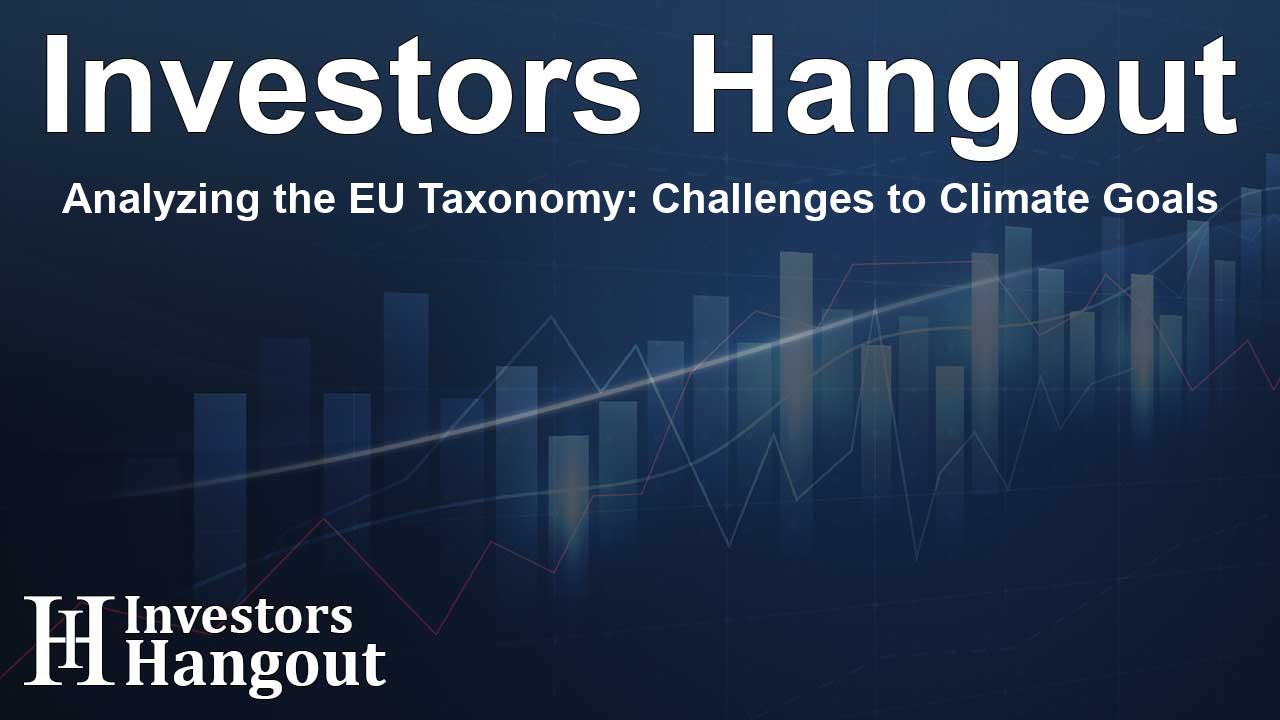Analyzing the EU Taxonomy: Challenges to Climate Goals

The Need for Expansion in the EU Taxonomy
Recent research emphasizes that the EU's sustainable finance framework must undergo significant changes. Without an expansion of its current criteria, the EU taxonomy will fall short of achieving the Paris Climate Agreement's goal of limiting global temperature increases to 1.5°C. This classification system is designed to identify economic activities deemed environmentally sustainable, promoting investments that assist in addressing climate challenges.
Impact on the International Finance Sector
The implications of this research are substantial for the international finance community. As various regions, including ASEAN and Australia, develop their own taxonomy policies, the findings shed light on the urgent need for a cohesive approach that prioritizes sustainability and environmentally friendly growth.
Comparative Analysis with OECM
Utilizing the One Earth Climate Model (OECM), researchers are able to compare the existing EU taxonomy against various energy scenarios. Created under the guidance of the University of Technology Sydney (UTS) and the Net-Zero Asset Owner Alliance, this integrated energy assessment tool serves as a valuable benchmark for understanding how well the current taxonomy aligns with necessary climate actions.
Understanding Economic Coverage and Emissions
In a scenario where the EU taxonomy is fully implemented across the entire regional economy, it could encompass about 30% of the EU's GDP. However, concerningly, it only addresses approximately 7.2% of the energy-related CO2 emissions within the EU27. This stark contrast highlights significant gaps that need to be addressed for real progress to occur.
Key Recommendations for Improvement
Associate Professor Sven Teske, a co-founder of OECM and Director of the UTS Institute for Sustainable Futures, stresses that for the taxonomy to be effective in fostering a sustainable and low-carbon future, it must be more inclusive and considerate of various transition elements. The research suggests three critical recommendations for expanding the taxonomy:
- Broader Industry Inclusion: It's essential to include all industries, especially those currently unrepresented like the chemical sector.
- Long-Term Goals: The taxonomy should incorporate long-term objectives aimed at achieving net-zero emissions, extending beyond the limited 2025 and 2035 targets.
- Support for Transition Finance: Addressing the gap in transition finance is vital to assist in the shift towards new technologies.
Science-Aligned Investment Guidance
Adopting the suggested improvements to the EU Taxonomy would empower investors to make more informed decisions aligned with global climate obligations. By understanding the OECM pathways, investors could identify high-impact sectors, such as chemicals, where their financial contributions can lead to significant environmental advancements while also securing sustainable economic returns.
Looking Ahead
At the upcoming COP29 conference in Azerbaijan, Dr. Teske will share these research findings at the Australian Pavilion, underscoring their importance in the global combat against climate change. As governments and organizations work towards meeting rising climate expectations, it becomes critical for frameworks like the EU taxonomy to adapt and expand.
Frequently Asked Questions
What is the EU taxonomy?
The EU taxonomy is a classification system that defines criteria for economic activities to be considered environmentally sustainable. It aims to promote investment in projects that align with climate goals.
Why is the EU taxonomy considered inadequate?
Recent research indicates that the current EU taxonomy fails to cover significant aspects of the economy, including entire industries, and does not align well with the targets of the Paris Climate Agreement.
What is the One Earth Climate Model (OECM)?
The OECM is an integrated energy assessment tool that provides insights on energy scenarios and fair carbon budgets for various countries, helping shape effective sustainability policies.
What recommendations were made for improving the EU taxonomy?
Key recommendations include broader industry inclusion, establishing long-term net-zero targets, and enhancing support for transition finance to facilitate technological shifts.
How can investors use the enhanced EU taxonomy?
By leveraging the enhanced EU taxonomy guided by OECM pathways, investors can better focus their investments on sectors that drive significant environmental change while achieving profitable returns.
About The Author
Contact Caleb Price privately here. Or send an email with ATTN: Caleb Price as the subject to contact@investorshangout.com.
About Investors Hangout
Investors Hangout is a leading online stock forum for financial discussion and learning, offering a wide range of free tools and resources. It draws in traders of all levels, who exchange market knowledge, investigate trading tactics, and keep an eye on industry developments in real time. Featuring financial articles, stock message boards, quotes, charts, company profiles, and live news updates. Through cooperative learning and a wealth of informational resources, it helps users from novices creating their first portfolios to experts honing their techniques. Join Investors Hangout today: https://investorshangout.com/
The content of this article is based on factual, publicly available information and does not represent legal, financial, or investment advice. Investors Hangout does not offer financial advice, and the author is not a licensed financial advisor. Consult a qualified advisor before making any financial or investment decisions based on this article. This article should not be considered advice to purchase, sell, or hold any securities or other investments. If any of the material provided here is inaccurate, please contact us for corrections.
